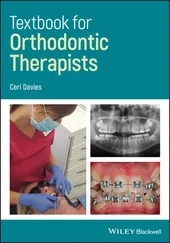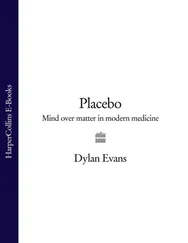12 Which of the following dietary patterns is consistent with certain moral principles?the prudent dietthe vegetarian dietthe Asian dietthe DASH dietnone of the above
13 Complete the sentence: According to the 2015–2020 Dietary Guidelines for Americans, a healthy dietary pattern should include _____________________.
14 Report four dietary patterns that have been shown to have protective effects against diet‐related diseases.
15 Do you agree with the statement, “There is no healthy dietary pattern for all”? Please justify your reply.
1 Budd, G. (1842). Lectures on the disorders resulting from defective nutriment. Lond. Med. Gaz. 2: 632–636. 712–716, 743–749, 906–915.
2 Burggraf, C., Teuber, R., Brosig, S., and Meier, T. (2018). Review of a priori dietary quality indices in relation to their construction criteria. Nutr. Rev. 76 (10): 747–764.
3 Carpenter, K.J. (2003). A short history of nutritional science: part 4 (1945–1985). J. Nutr. 133 (11): 3331–3342.
4 Dietary Guidelines for Americans. (2015–2020). https://health.gov/sites/default/files/2019‐09/2015‐2020_Dietary_Guidelines.pdf.
5 Dominguez, L.J., Barbagallo, M., Munoz‐Garcia, M. et al. (2019). Dietary patterns and cognitive decline: key features for prevention. Curr. Pharm. Des. 25 (22): 2428–2442. doi: 10.2174/1381612825666190722110458.
6 Grosso, G., Micek, A., Godos, J. et al. (2017). Dietary flavonoid and lignan intake and mortality in prospective cohort studies: systematic review and dose‐response meta‐analysis. Am. J. Epidemiol. 185 (12): 1304–1316.
7 Jayedi, A., Soltani, S., Abdolshahi, A., and Shab‐Bidar, S. (2020). Healthy and unhealthy dietary patterns and the risk of chronic disease: an umbrella review of meta‐analyses of prospective cohort studies. Br. J. Nutr. 124 (11): 1133–1144.
8 Krebs‐Smith, S.M., Pannucci, T.E., Subar, A.F. et al. (2018). Update of the healthy eating index: HEI‐2015. J. Acad. Nutr. Diet. 118 (9): 1591–1602.
9 Kritchevsky, S.B. and Kritchevsky, D. (2000). Egg consumption and coronary heart disease: an epidemiologic overview. J. Am. Coll. Nutr. 19 (5 Suppl): 549S–555S.
10 Lind, J. (1753). A Treatise of the Scurvy. Edinburgh: Sands, Murray and Cohran for A Kincaid and A Donaldson.
11 Lipner, S. (2018). A classic case of scurvy. Lancet 392 (10145): 431.
12 Martinez‐Gonzalez, M.A. and Bes‐Rastrollo, M. (2014). Dietary patterns, Mediterranean diet, and cardiovascular disease. Curr. Opin. Lipidol. 25 (1): 20–26. doi: 10.1097/MOL.0000000000000044.
13 Martinez‐Gonzalez, M.A. and Martin‐Calvo, N. (2013). The major European dietary patterns and metabolic syndrome. Rev. Endocr. Metab. Disord. 14 (3): 265–271. doi: 10.1007/s11154‐013‐9264‐6.
14 Martinez‐Gonzalez, M.A. and Sanchez‐Villegas, A. (2016). Food patterns and the prevention of depression. Proc. Nutr. Soc. 75 (2): 139–146. doi: 10.1017/S0029665116000045.
15 Medina‐Remon, A., Kirwan, R., Lamuela‐Raventos, R.M. et al. (2018). Dietary patterns and the risk of obesity, type 2 diabetes mellitus, cardiovascular diseases, asthma, and neurodegenerative diseases. Crit. Rev. Food Sci. Nutr. 58 (2): 262–296. doi: 10.1080/10408398.2016.1158690.
16 Roman‐Vinas, B., Ribas Barba, L., Ngo, J. et al. (2009). Validity of dietary patterns to assess nutrient intake adequacy. Br. J. Nutr. 101 (Suppl 2): S12–20. doi: 10.1017/S0007114509990547.
17 Ruiz‐Canela, M., Bes‐Rastrollo, M., and Martinez‐Gonzalez, M.A. (2016). The role of dietary inflammatory index in cardiovascular disease, metabolic syndrome and mortality. Int. J. Mol. Sci. 17 (8): 1265. doi: 10.3390/ijms17081265.
18 Soliman, G.A. (2018). Dietary cholesterol and the lack of evidence in cardiovascular disease. Nutrients 10 (6): 780.
19 USDA. (2015–2020). Dietary guidelines for Americans, eighth edition. https://health.gov/our‐work/food‐nutrition/2015‐2020‐dietary‐guidelines.
20 Wang, S., Meckling, K.A., Marcone, M.F. et al. (2011). Synergistic, additive, and antagonistic effects of food mixtures on total antioxidant capacities. J. Agric. Food Chem. 59 (3): 960–968.
CHAPTER 6 Popular Dietary Patterns Around the World
The Therapeutic Lifestyle Changes (TLC) Diet
The dietary management of dyslipidemia (defined as elevated total or LDL cholesterol or triglycerides levels, or low levels of HDL cholesterol) is a major goal in the management of CHD. According to the 2019 European Society of Cardiology/European Atherosclerosis Society (ESC/EAS) guidelines for the management of dyslipidemias, the dietary strategy for lowering LDL cholesterol is to replace saturated and trans fatty acids with unsaturated and monosaturated fatty acids, as well as simple carbohydrates (e.g., sugars) with complex carbohydrates (e.g., whole grains, fruits, and vegetables).
In 2001, the National Cholesterol Education Program (NCEP) Expert Panel on Detection, Evaluation, and Treatment of High Blood Cholesterol in Adults (Adult Treatment Panel III, ATP III) published the dietary guidelines for lowering LDL cholesterol called the “Therapeutic Lifestyle Changes” (TLC) diet. These guidelines replaced what had been the most widely accepted dietary approaches for lowering LDL, the Step I and Step II diets. The basic principles of the TLC diet are shown in Table 6.1.
The first step of the TLC dietary approach is to reduce the intake of saturated fats, trans fatty acids, and cholesterol in order to lower LDL cholesterol. At this step, emphasis is also given to physical activity (at least 200 kcal/d of daily energy expenditure). After 6 weeks, if the LDL goal has not been achieved, other dietary choices for lowering LDL, such as plant stanols/sterols and soluble fiber, can be added. Sterols and stanols prevent the absorption of cholesterol in the human gastrointestinal tract, thereby decreasing cholesterol concentration in the bloodstream. When maximum LDL reduction is achieved with dietary therapy, emphasis is shifted to other metabolic abnormalities. Given that dyslipidemias are mostly prevalent among obese individuals who live a sedentary life, body weight loss plays an important role in further ameliorating not only LDL levels but also other risk factors associated with obesity. Physicians and other health professionals should advise their patients to visit a registered dietitian or other qualified nutritionist for expert advice and the development of appropriate/individualized nutritional plans.
TABLE 6.1 The basic principles of the TLC diet. a
| Saturated fat |
Less than 7% of total calories |
| Polyunsaturated fat |
Up to 10% of total calories |
| Monounsaturated fat |
Up to 20% of total calories |
| Total fat |
25–35% of total calories |
| Carbohydrates b |
50–60% of total calories |
| Total fiber Soluble fiber |
20–30 g/d 10–25 g/d |
| Proteins c |
Approximately 15% of total calories |
| Cholesterol |
Less than 200 mg/d |
| Plant stanols/sterols |
2 g per day |
| Total calories (energy) |
Balance energy intake and expenditure to maintain desirable body weight and prevent weight gain |
| Physical activity |
Moderate physical activity to expend at least 200 kcal/day |
aNCEP‐ATPIII (2001).
bCarbohydrates should be derived predominantly from foods rich in complex carbohydrates, such as whole grains, fruits, and vegetables.
cPlant‐based proteins can be used as a replacement for animal‐based proteins.
The TLC diet reflects the recommendations included in the Dietary Guidelines for Americans 2000. Although in the TLC diet the total dietary fat is higher than in the aforementioned guidelines, this comes from unsaturated fat, which has been shown to favorably affect TAGs and HDL concentrations in individuals with MetS. As far as food components are concerned, the TLC diet promotes increased consumption of fruits and vegetables, whole‐grain cereals, low‐fat dairies, fish, and poultry.
Читать дальше












